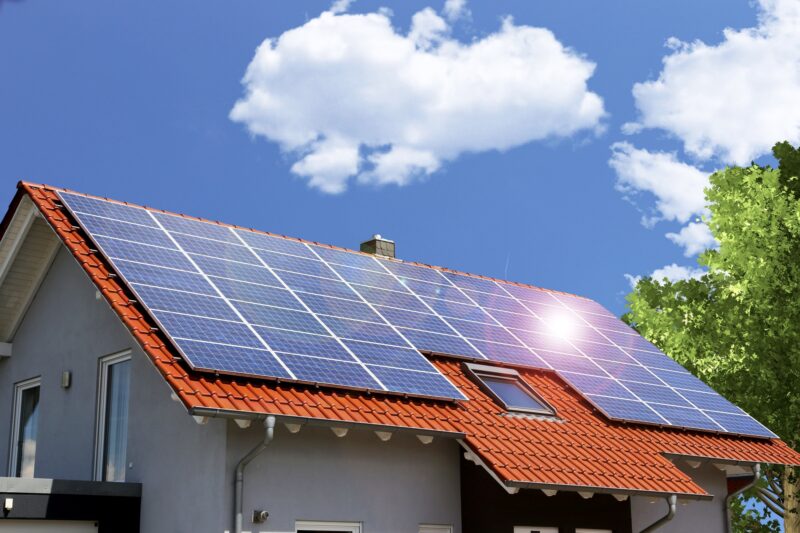Frequently Asked Questions About Community Solar
Community solar offers the quickest method to incorporate renewable energy into your community’s electricity grid. It provides advantages to all individuals who contribute towards their utility bills, irrespective of whether they are renters, co-op/condo owners, or businesses.
There are a variety of community solar subscription models. Each structure has different upfront costs and values over time. We will explore some of the most popular options below:
What is Community Solar?
Thanks to community solar, residents and businesses may use solar energy without putting panels on their roofs. Instead, they “subscribe” to a local solar farm and reap the savings that come with it. Most community solar projects are in public buildings or open spaces, but utility companies may also host them on their land. Projects vary in size, contract length, ownership model, and pricing. Depending on state law and specific program design, some community solar options offer subscribers ownership of a certain number of panels in the project or a fixed amount of energy (either in the form of credits or kilowatt-hours). Once a solar farm is completed, it is connected to your local utility and sends power into the grid. Your electric meter will track the electricity production, and your utility will credit you with a value – known as your solar credit – on your monthly bill for the energy the solar farm produces.
With community solar, you can take your subscription with you if you move to another house within the same region and the same utility service territory. Alternatively, if you sell your home, you can transfer your subscription to the new owner or cancel it. In either case, you will continue to save on your electricity bills.
What are the Benefits of Community Solar?
Community solar projects are a great way to go solar without installing panels on your roof. You can sign up for a local solar energy project subscription and receive credit on your electricity bill for the energy it produces. The credits you receive are based on your portion of the project’s generating capacity.
The energy your share of the project is sent to the electric grid through an electric meter, which tracks its generation and converts it into a monetary value, commonly called “solar credits.” When you receive your utility bill, These credits are applied to your electricity use. You remain with the same utility, and if you move within the service area, you can transfer or cancel your community solar subscription.
This type of energy production can create a more equitable economic model for communities, especially those traditionally underserved by dirty fossil fuel plants. It is because the communities most affected by these facilities tend to be low-income and people of color, who are closer to the plants, thereby experiencing higher levels of pollution and health issues as a result. Community solar empowers and protects communities against rising electricity prices by allowing more people to access clean and renewable energy.
What Are the Options for Subscribing to Community Solar?
Going solar can be done in two primary ways: installing a rooftop system at your home or business or subscribing to a community solar project. The latter is typically the better option for consumers who can’t install their rooftop solar because of factors such as shade or a roof needing a better fit for solar panels. The basic concept is simple: subscribe to a community solar project sized appropriately for your energy usage. The community solar farm then produces solar electricity and sends it to the utility grid.
There are some important things to remember when considering a community solar subscription. First, it’s typically a long-term commitment (typically 25 years). Consumers must be prepared to commit for that duration, or they may face penalties that could make breaking the contract early costly. Second, the rules around community solar vary by state and by utility. Some companies that offer community solar operate as aggregators, allowing subscribers to choose from a portfolio of projects. Others act as agents for a specific developer, and still, others are vertically integrated, with developers and marketers working together to sell projects. The latter tend to start selling subscriptions long before permitting, and siting are complete, which can lead to longer delays.
How Does Community Solar Work?
The key to community solar is the ability for people to access clean, renewable energy without installing rooftop panels. Instead, participants in a community solar program subscribe to the electricity generated by a group of local or regional projects built on public buildings, private property, brownfield sites, or other locations. The program can adopt this approach through regulations like virtual net metering, which credits consumers’ electric bills for the electricity produced by a shared renewable project located elsewhere in their service area.
Sometimes, a participant will buy or lease all or a portion of the panels in a community solar project. Other times, the program provides access to the electricity being generated. Either way, these programs allow consumers to save 5-15 percent on electricity bills.
Programs vary, and there are many barriers to participation. Some require a credit check, shutting out those with low or no credit (though that is becoming less common). There are also state-level regulations that can influence community solar programs. But there is great progress in overcoming these roadblocks, and community solar is poised to become a more mainstream option for all.



